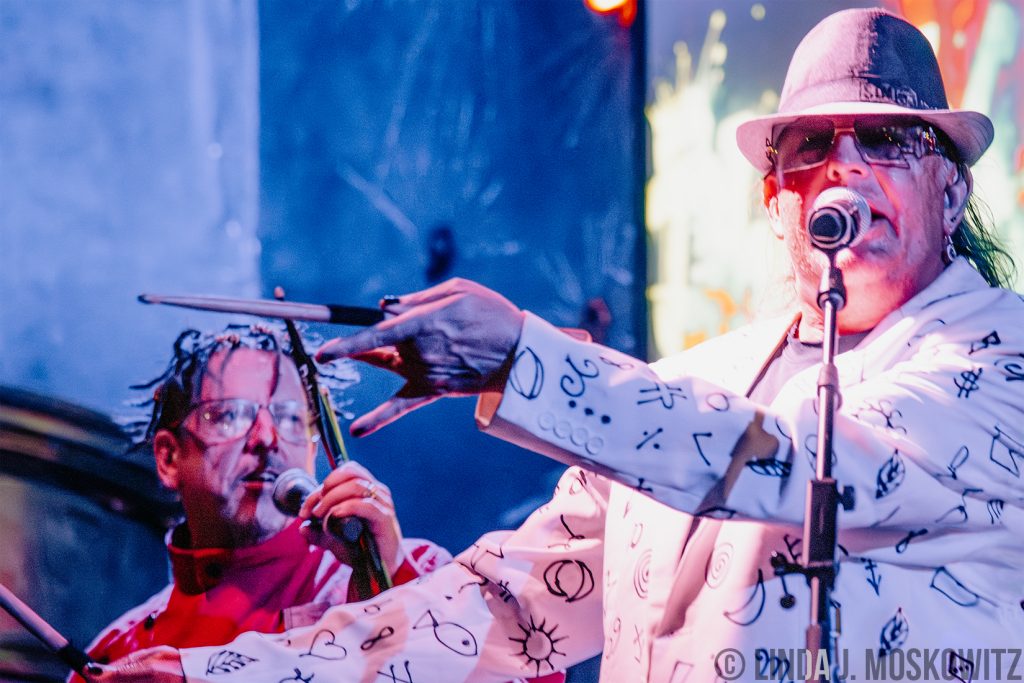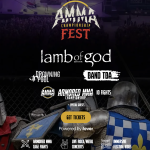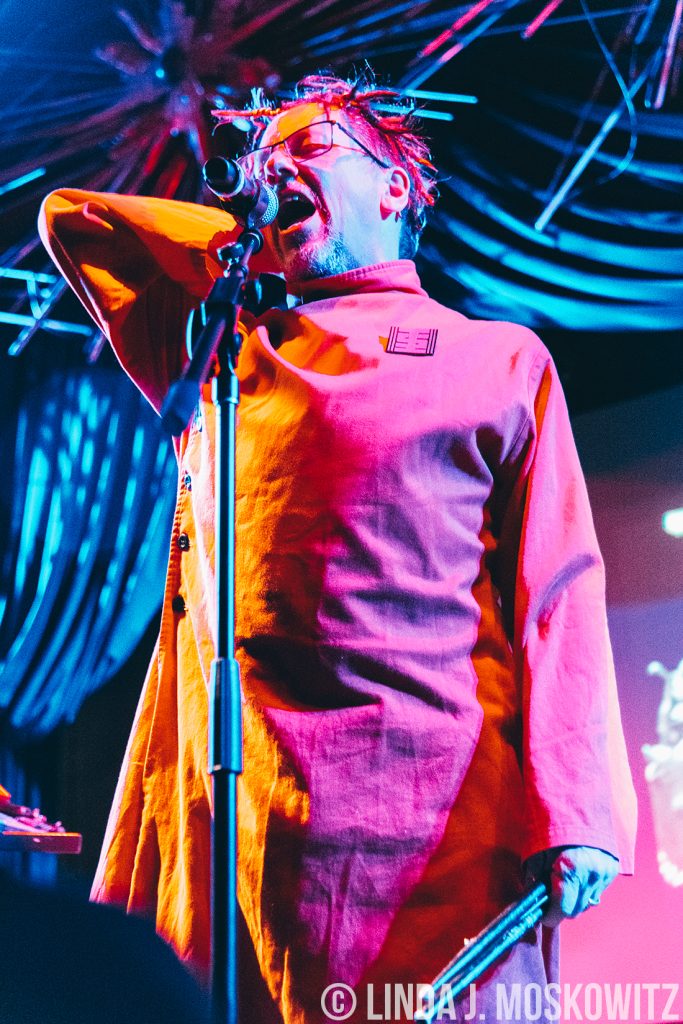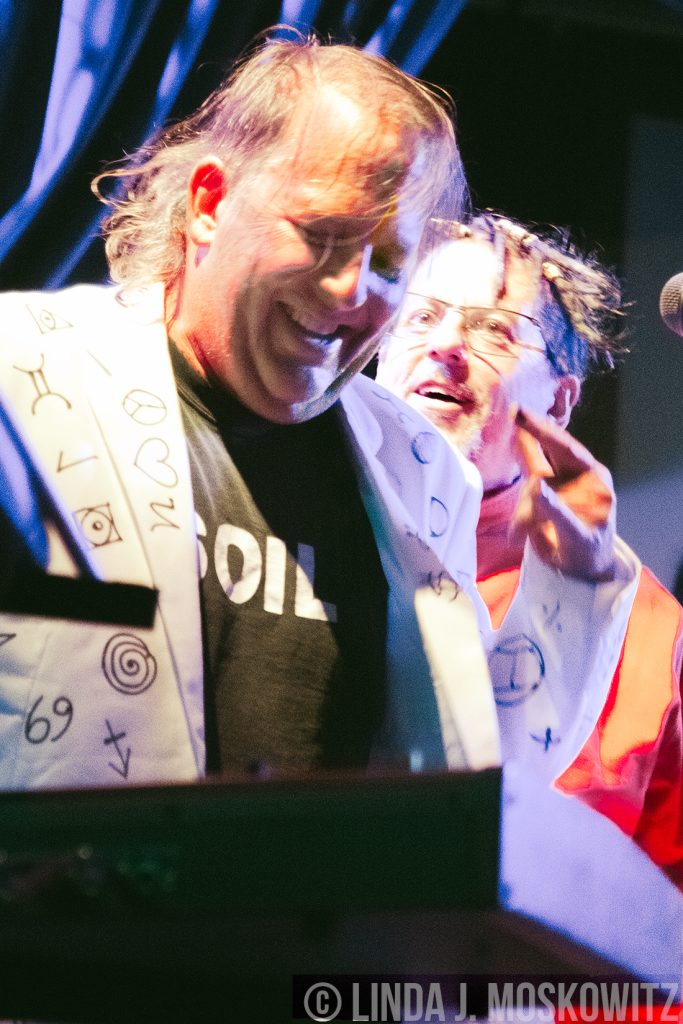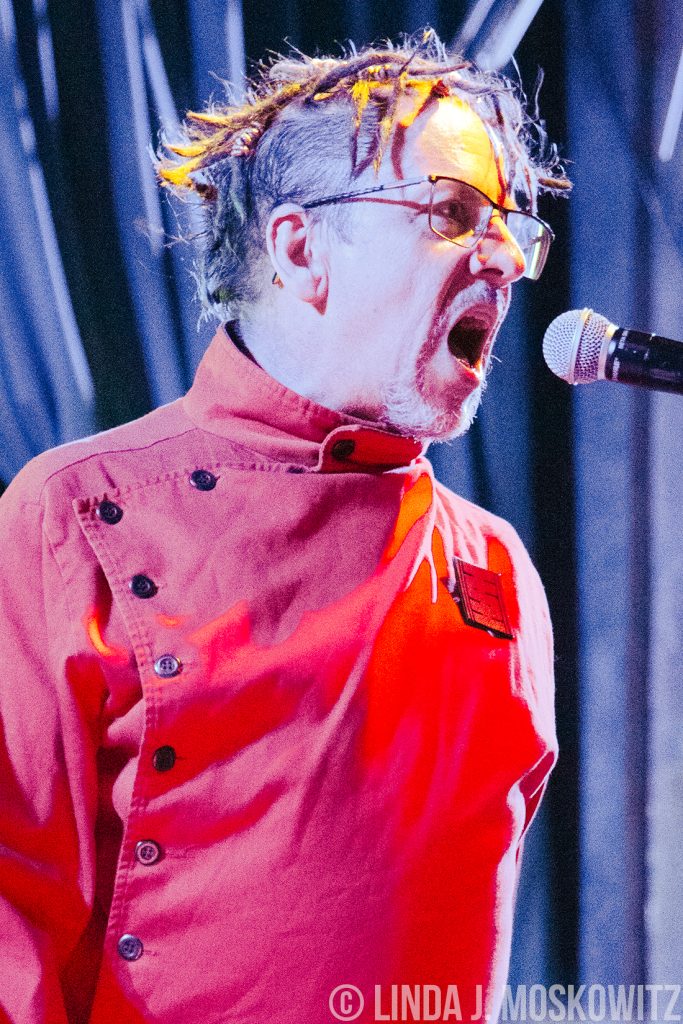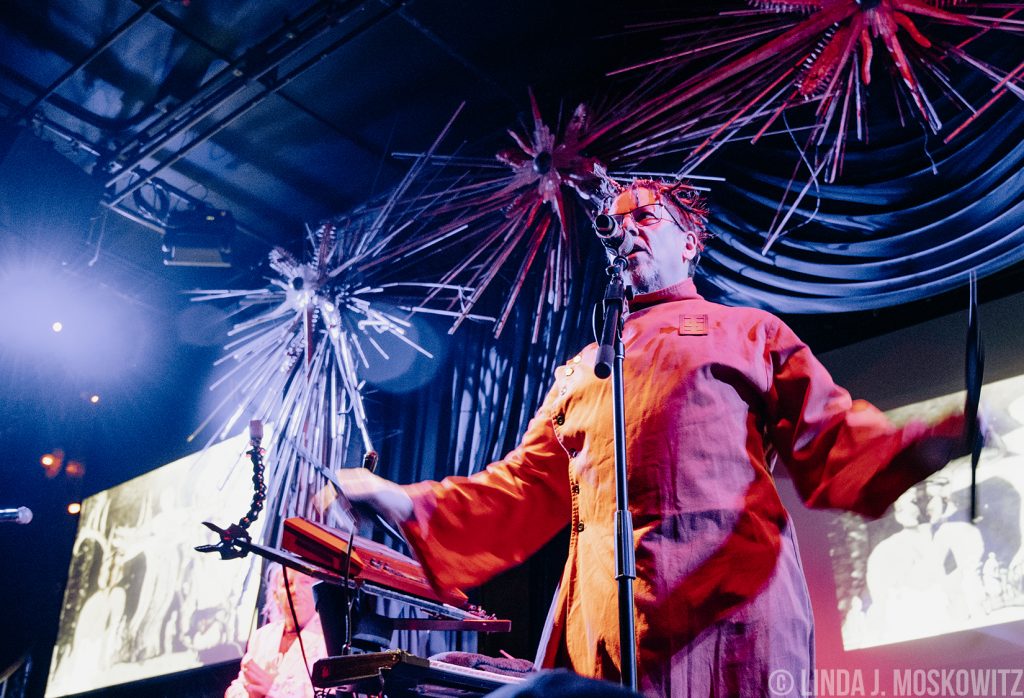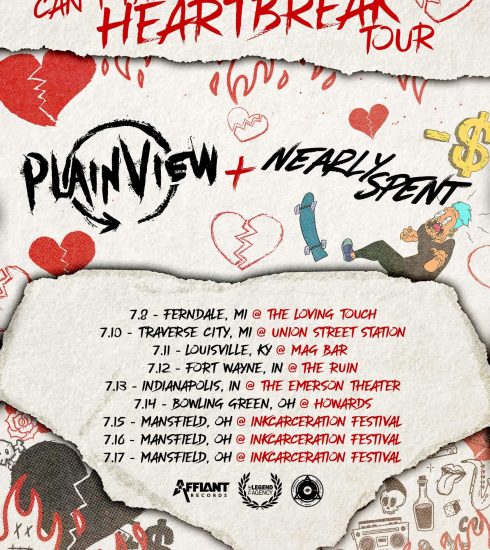Information Society: On Time and Under Budget at Sony Hall
I am standing two people back from the stage at the Sony Theater in Midtown Manhattan, looking around at the people surrounding me and feeling vaguely perplexed. I see a lot of shows in NYC (and have reviewed more than a few), and find audiences are generally generic to the band’s brand. But the audience for Information Society (InSoc), a band mostly known for late 80s/early 90s dance music, doesn’t consist solely of the Gen-X/older Millennials I expected.
This is off-topic, but I’m struggling to find terms for people in my age demographic that don’t make me want to punch kittens (not actual kittens). Seriously, go look up some descriptors for people in their late 40s-50s. You’ll understand my reluctance to feel a need to choose between “mature” and “oldish”. I would use “middle-aged”, since mathematically it seems accurate, but the synonyms for that include “aged” and, God help me, “hoary”.
Back to the audience. Sure, there are lots of my contemporaries milling about, but there are just as many people waiting for the show to start that aren’t Gen-X adjacent (i.e. “not-middle-aged”/“young”) and many of them are speaking in… no, that’s not Spanish…it’s like Spanish, but not Spanish… Portuguese? Huh. As I am considering this, my husband returns from the bar having learned that Information Society is huge in Brazil.
This atypical audience of not-all-together-youthful dance music fans, Star Trek fans (“Pure Energy,” sayeth Spock), Brazilian fans, and the actual young makes sense considering we have gathered together in a basement venue with excellent bar service to see a band that has had the most atypical of careers.
Band members Kurt Harland, Paul Robb and James Cassidy met in high school and formed Information Society in Harland’s college dorm room. As Robb told TwinCities.com in 2015, “we were complaining that there weren’t any bands around that sounded like what we wanted to hear, so we started our own.” The popularity of their first single, “Running” in New York Latin dance clubs (hence being big in Brazil), lead to a record deal with Tommy Boy Records, then a Warner Brothers subsidiary. Their first, self-titled album would become a hit, but it hit a speed bump on its way out to market.
The band used several samples from the original Star Trek television single, most notably on the first single, and the band’s biggest hit to date, “What’s on Your Mind (Pure Energy)”. It took months to get clearance – and the intervention of actor Leonard Nimoy (“Spock”) – but after getting the legal issues fixed, it took no time for the album to find an audience.
The album went on to sell more than 500,000 copies in the US and they became so popular in Brazil, a six week tour of the country playing to huge crowds followed. A successful major label debut doesn’t always guarantee future success. The two follow up albums, 1990’s Hack and 1992’s Peace and Love, Inc, couldn’t build on the momentum of the first. By 1993, Tommy Boy had dropped the band and the original lineup broke up. Harland continued recording as Information Society, but soon enough all three were finding success in different careers. Robb had moved into film and commercial work; Harland became an accomplished composer for the video game industry; Cassidy landed as a senior instructor at Oregon State University after getting degrees in both Fisheries Science and Crop and Soil Science.
Cassidy and Robb reformed Information Society in 2006, releasing the Synthesizer album in 2007 with Christopher Anton on lead vocals. Harland returned to the band in 2008 and the band subsequently released 2014’s Hello World and 2016’s Order of Magnitude, a covers album. In 2019, the band added a new member, Zeke Prebluda (Falcotronik) and in 2021, released OddFellows.
It’s thanks to those subsequent careers the original three took on in the 90s that was about to make this Information Society show so much fun for everyone in the crowd, as Robb told SelfEdge last year. “We’re lucky in that all three of us have had successful careers in other endeavors, so we’re able to go out there and pick the shows we want to do.” The polished pretension practiced by most acts with gold selling records under their belts was nowhere to be seen as the band played through a setlist of songs pulled from each of their various albums.
They opened with “Extraordinary Popular Delusions and the Madness of Crowds” from OddFellows, a track that features only spoken samples on top of a techno beat, followed by the insanely danceable, 2007’s “I Like the Way You Werk It”. As the rest of the band prepped for the next song, “Over the Sea” from the first album mixed with a bit of “Hack 1” from the second album, Harland promised the audience that songs would be delivered “on time and under budget”. It’s a line he’s delivered during shows for the last few years, but it never fails to land.
It’s this type of interaction with the audience that has helped Information Society become a cult favorite. The band frequently teased each other and made passing asides to the crowd. Harland addressed the people in the crowd who only wanted to hear the hits from the first three albums, by assuring them they would have to listen to some other songs, too. He got a laugh, but the crowd was dancing excitedly during every track, no matter how obscure. Sure, they got a huge reaction by playing the first album single, “Walking Away,” but their cover of The Sisters of Mercy song, “Dominion/Mother Russia” got a similar response.
Harland acknowledged the diverse crowd and took the chance to question why there were people in the audience under the age of 40. He joked about being forced into going by a parent or other authority figure. The truth is, they were having as much fun as the rest of us.
The band looked relaxed on stage as they played the popular and obscure. They ended their set on time and I assume under budget with “What’s On Your Mind” and “Room 1904” from OddFellows. The overall vibe in Sony Hall was engaging and energetic. The crowd seemed less like a group of strangers watching a show and more like a really good party filled with people you wouldn’t mind getting a drink with sometime next week after those of us not under the age of 40 have had a chance to recover.
